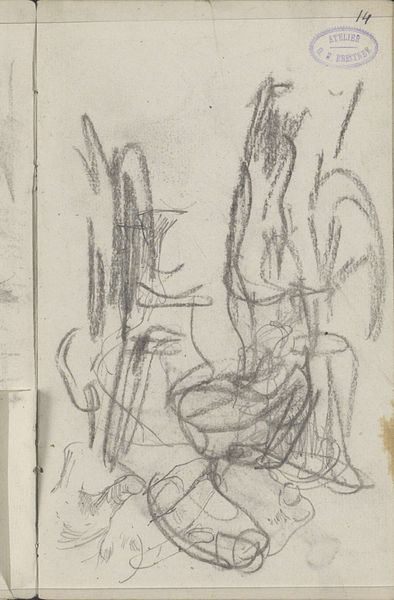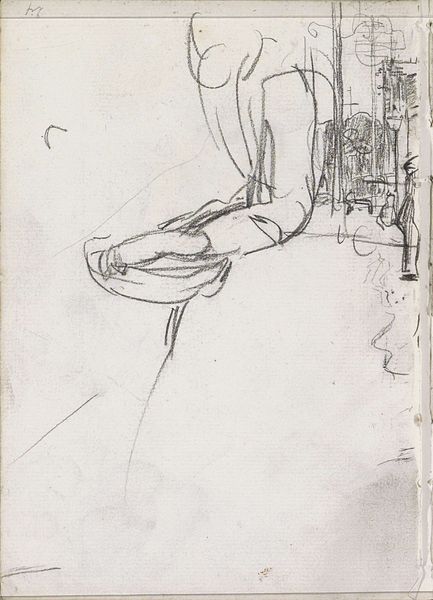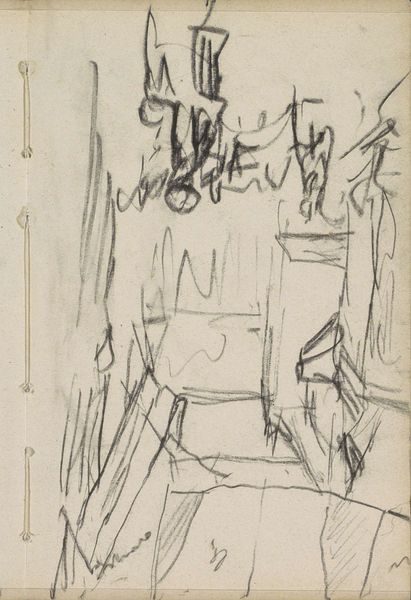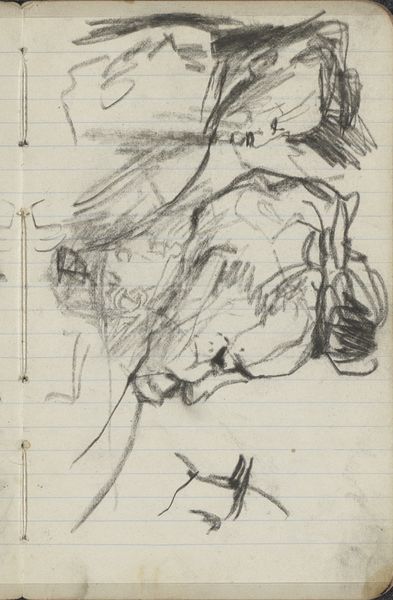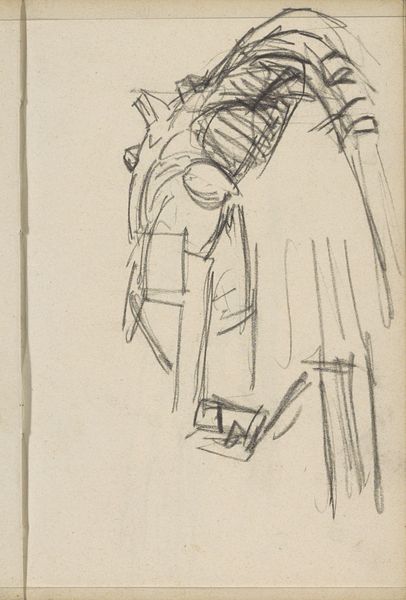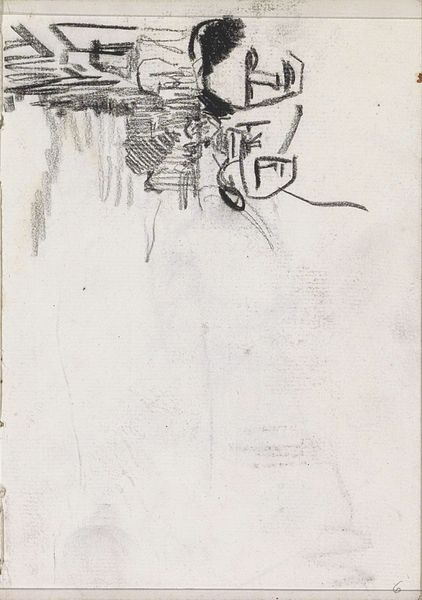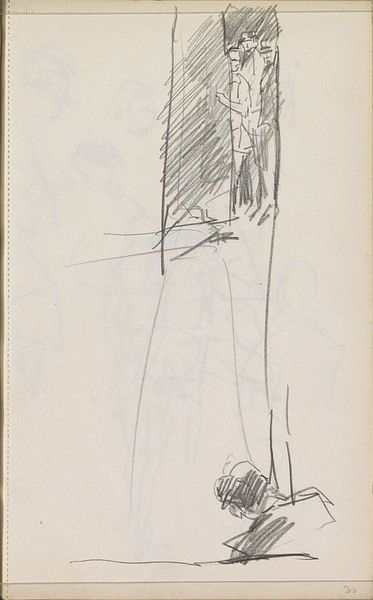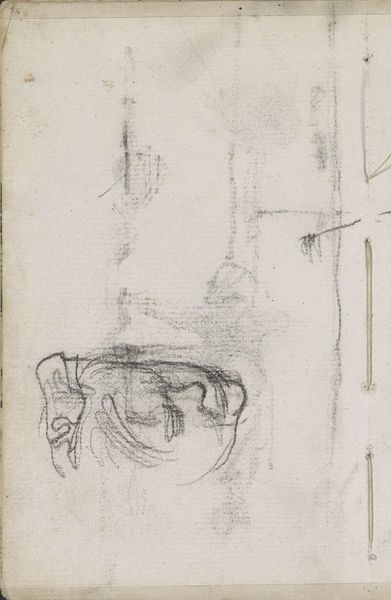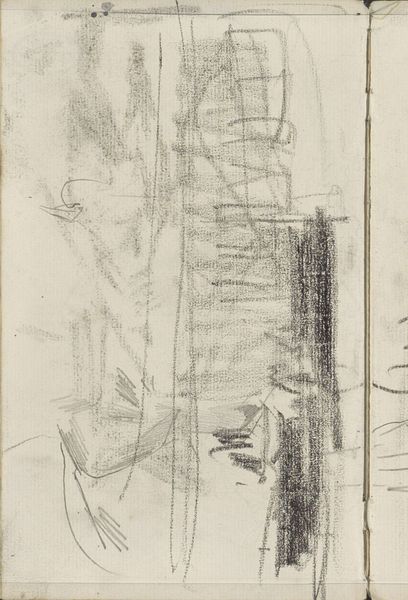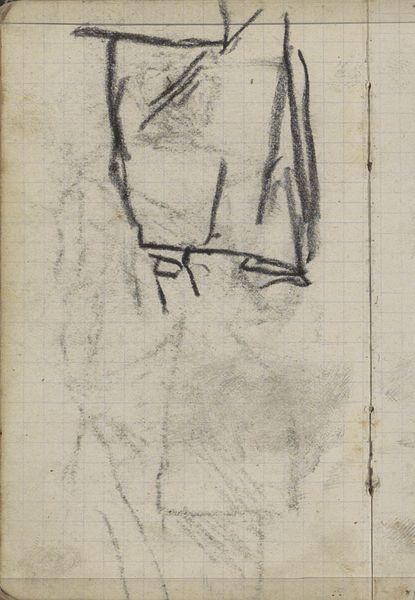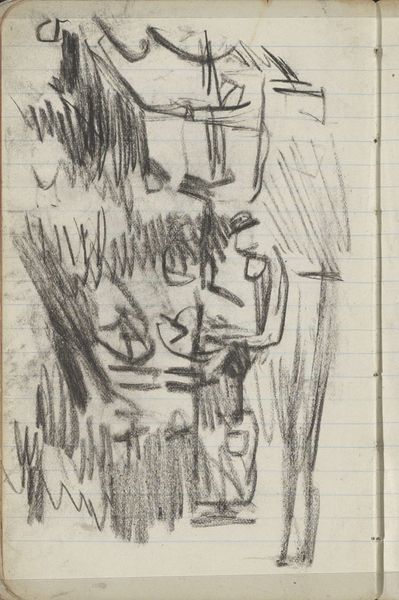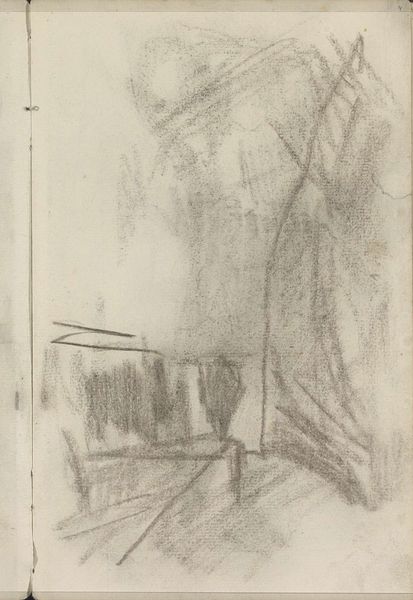
drawing, pencil, graphite
#
drawing
#
impressionism
#
landscape
#
figuration
#
pencil
#
graphite
#
realism
Copyright: Rijks Museum: Open Domain
Editor: Here we have George Hendrik Breitner’s "Figuur in een landschap en een staande vrouw," created around 1880-1882, using graphite and pencil on paper. It feels incredibly raw and immediate, like a fleeting moment captured. What do you see in this piece? Curator: I see a compelling intersection of societal observation and artistic process. Breitner, deeply engaged with the working class of Amsterdam, often depicted them anonymously, stripped of individual identity. Is this faceless figure, rendered with such hasty lines, representative of the marginalized, rendered invisible by societal indifference? Consider, too, the way the landscape seems to encroach, almost pressing down on the figure. Do you see this as a reflection on the limited opportunities afforded to women, perhaps? Editor: I hadn't considered the landscape's pressure, but now I do. The dark mass at the bottom really weighs down the composition. Is the sketchiness indicative of his style? Curator: Precisely. His 'sketchy' style—though actually very deliberate—mirrors the ephemeral nature of urban life for the lower classes. Breitner used photography extensively to capture reality, which influenced his rapid sketching technique. One must ask: can we read his quick strokes as an assertion that reality itself is fleeting, perpetually on the verge of vanishing? Editor: It’s like he's documenting something before it disappears. What can we make of the 'staande vrouw' - the standing woman? Curator: I wonder if we can interpret her stance as representing resistance or a call to recognize their precarious place in society. Also note, the contrast between her and the ‘Figuur in een landschap’; is it also about drawing parallels or highlighting differences of that experience through composition, positioning? These drawings seem not only observational but like deliberate tools for advocacy through observation. Editor: So by analyzing the social context, even a sketch like this offers a rich tapestry of interpretation! Curator: Absolutely. Understanding art as a historical and social product lets us have these meaningful conversations. I appreciate how open you've been in interrogating these sketches' wider narrative.
Comments
No comments
Be the first to comment and join the conversation on the ultimate creative platform.
